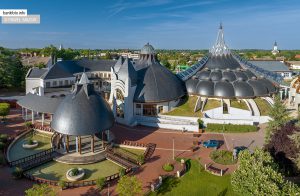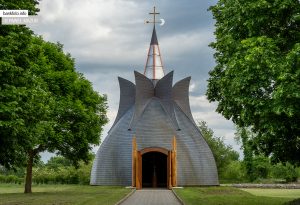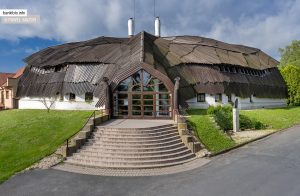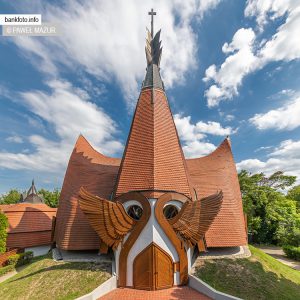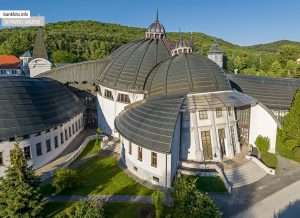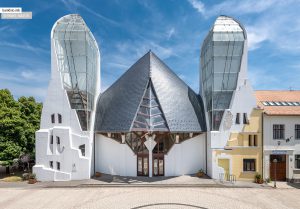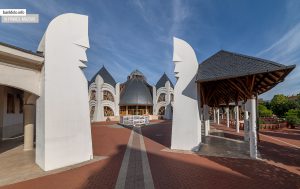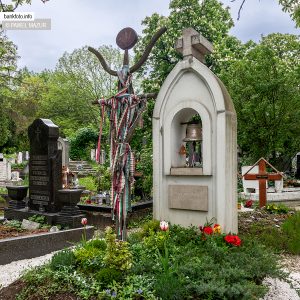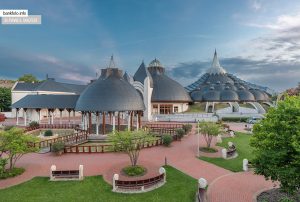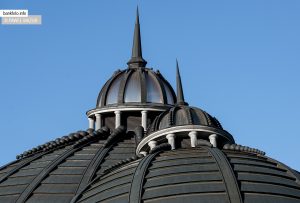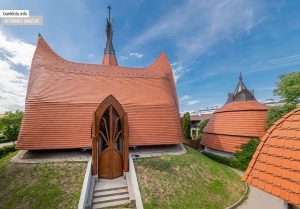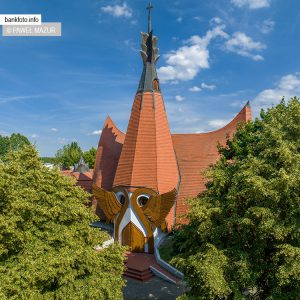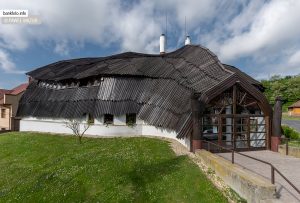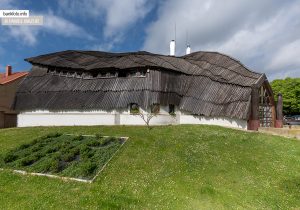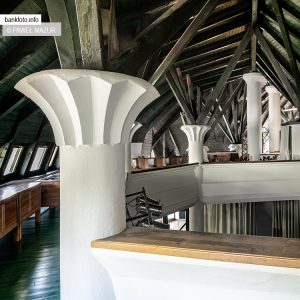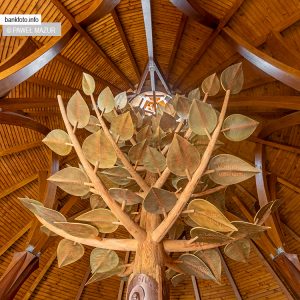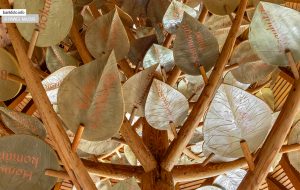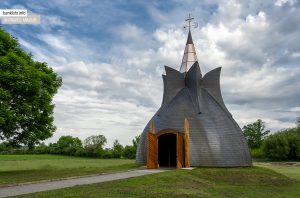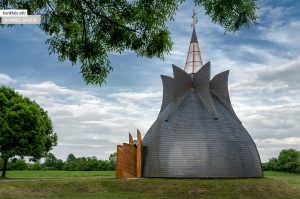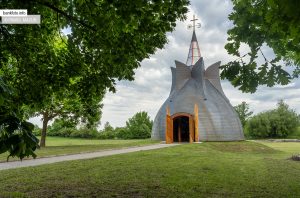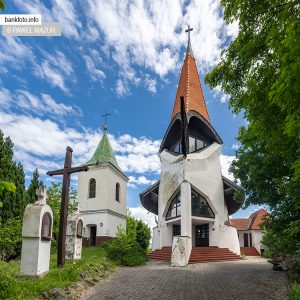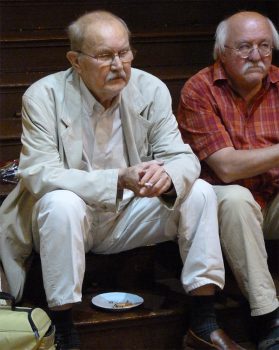
IMRE MAKOVECZ (1935-2011). Jeden z najwybitniejszych twórców architektury organicznej. Węgier, absolwent budapesztańskiej politechniki, wieloletni prezes Węgierskiej Akademii Sztuk, laureat wielu nagród architektonicznych. Odrzucał zunifikowaną modernistyczną, funkcjonalistyczną architekturę drugiej połowy XX wieku na rzecz projektów inspirowanych naturą i węgierską tradycją. Rysowane przez Makovecza obiekty, otrzymywały zabawne formy wprost kopiowane z przyrody, jak uszy lub oczy sowy. Do jego najważniejszych realizacji należą: kościół luterański w Siófok na Balatonem, kościół Świętego Ducha w Paks, część kompleksu Uniwersytetu Katolickiego w Piliscsabie pod Budapesztem (Stephaneum) oraz dwa obiekty w niewielkim miasteczku Makó na wschodzie Węgier słynącym z hodowli cebuli – Teatru Cebula (Onion House Theatre) oraz kompleksu basenowego Hagymatikum (węg. hagyma to cebula).
IMRE MAKOVECZ (1935-2011). One of the most outstanding creators of organic architecture. Hungarian, graduate of the Budapest University of Technology, long-time president of the Hungarian Academy of Arts, winner of many architectural awards. He rejected the unified modernist, functionalist architecture of the second half of the 20th century in favor of projects inspired by nature and Hungarian tradition. The objects drawn by Makovecz received funny forms directly copied from nature, such as owl ears or eyes. His most important projects include: the Lutheran church in Siófok on Lake Balaton, the Church of the Holy Spirit in Paks, part of the complex of the Catholic University in Piliscsaba near Budapest (Stephaneum) and two facilities in the small town of Makó in eastern Hungary, famous for onion breeding – the Cebula Theater (Onion House Theater) and the Hagymatikum swimming pool complex (Hungarian: hagyma means onion).

